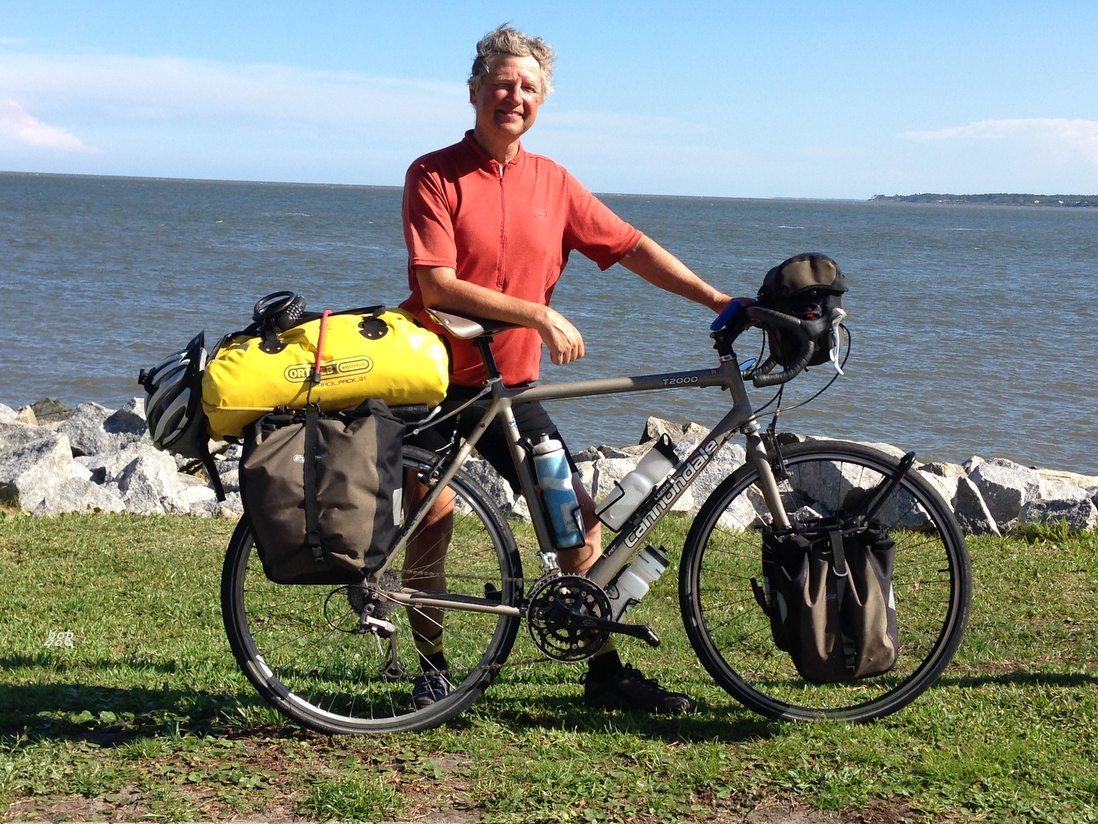I havent done a Photo of the Month blog since April. There have been a lot of wonderful Greenpeace photos. The Arctic Sunrise sailing out of Murmansk 300 days after the ship was seized in international waters and being welcomed home to Amsterdam. The Rainbow Warrior blocking a tanker full of the first shipment of Arctic oil from docking. The airship A.E. Bates flying over Glacier National Park, and the nearby Decker Coal Mine. Douglas Ceron-Reyes captured Neil Young at the Reject & Protect Rally at the Capitol.
I didnt write about any of these because I was offline. I bicycled from the Pacific to the Atlantic Ocean across the southern part of the United States. In daydreaming about the adventure for years, I wondered if I could make it. I wondered if I had the strength and endurance it would take to keep pedaling that long and far. I wondered if I could overcome the problems and perils I would encounter; if I could stay in the moment and see the things around me, to connect with people every day. I accomplished these things and more in a six-week journey that took me from Oceanside, California over the Cuyamaca Mountains and down into Anza-Borrego State Park.
Nearly half the journey east would be in a desert environment with an amazing depth of the night sky, the soft fragrance of Mesquite blossom, an intense scorching sun and a withering dryness that kept me thirsty, seeking moisture. Around the Salton Sea and through the Algodones sand dunes and across the Colorado River into Arizona. Out across the long valleys and low mountains and through Phoenix. Out into sharp dry mountains and mining country. Across the San Carlos Apache Reservation and along the Gila River into New Mexico. Up over the Continental Divide and down into the valley of the Rio Grande south to El Paso and along the Mexican border to Del Rio before my way turned northeast through the Hill Country of Texas into Austin. Out over lakes and rivers to the lush farms, rice fields, crawfish ponds and bayous of Louisiana. Across the mighty Mississippi and onto the Gulf Coast. Across the Florida panhandle to south Georgia farms, fields and forests to the tidal marshes of the Atlantic Ocean on St. Simons Island.
On the road, bicycling along at an average speed of around 10 mph, I had the chance to observe in detail how the environment subtly transitions from place to place across the entire continent. From the palm, citrus and avocado hills of San Diego County to the centuries old live oaks draped with Spanish moss of the southeastern United States, there is an amazing progression of trees, wildflowers, shrubs and grasses. The landforms of mountains, hills and valleys, the water courses and rock outcrops. The canyons and plateaus all in an ever changing, never boring landscape. The plant life is like a symphony with themes of cacti, creosote and yucca mixed and matched with ocotillo and cholla. Then on the mountain there are notes of pines and cedars and then the desert theme resumes. Little flowers red and white, daisy like and trumpets, cluster and clump and disappear for a hundred miles and come back again.
On the road were vehicles of all descriptions from motorcycles and scooters to the Oversize Load semis. There were people out hauling alfalfa, logs, cows, hogs, rocks, dogs, sheep, machines, fences, kids, travel trailers utility trailers, horse trailers, boats on trailers, ATVs, three wheelers, motorcycles, bicycles and tricycles, kayaks, canoes and rubber rafts, feed sacks, hay bales and fertilizer. Every size and kind of vehicle you can imagine. On the side of the road I saw everything that can fall off a vehicle and a lot of dead things. Mostly straps and bungie cords, but lots of lug nuts, relays, clamps, screws, bolts, brake parts, clothes, phone cords, headphones, earphones, and medical stuff. gloves and masks, shoes and hats, pants, shirts, underwear, tarps, sheets, signs, packaging. An informal survey tells me that Bud Light is the roadside litterers beer of choice with Coors Light a close second mixed in with the bones and carcasses of deer, opossums, rabbits, snakes, birds, alligators, armadillos and many other unfortunate creatures.
Through cities, towns and rural areas I pedaled. Alongsidebikes, trikes, lawn mowers, lawn tractors, wagons, scooters and skateboards. Often wondering how people will ever transition away from fossil fuel. Like the dragon, the oil iscoiled around our money and in our lives. We transformed a huge part of the world for the automobile. It’s been a scant century since the first car drove across the United States in 1903. The mass production of the automobile didn’t start until Dec.1, 1913. This is a nano-second in history, but now the gas station is the food store, coffee shop, restaurant and hardware store, the only business in a hundred miles over much of the country. I saw people leave their vehicles idling for 20-30 minutes at a time while they went shopping or into a restaurant or made phone calls or waited with their child for a school bus.
Electric vehicles offer hope to transition to afuture without the internal combustion engine, but we need renewable energy infrastructure to charge them and batteries with a clean life cycle. I have no doubt that we can get there if the energy and imagination that created the petroworld can be diverted. Moving the tax subsidies and public support from the oil companies to supporting new technologies would help us get there faster, but I found it is possible and often a pleasure to get from place to place, day after day, carryingfood, water, clothes and tentwithout a car. Its an amazing world out there, and the saddle of a bicycle is a great place to see, hear, smell and feel it.



